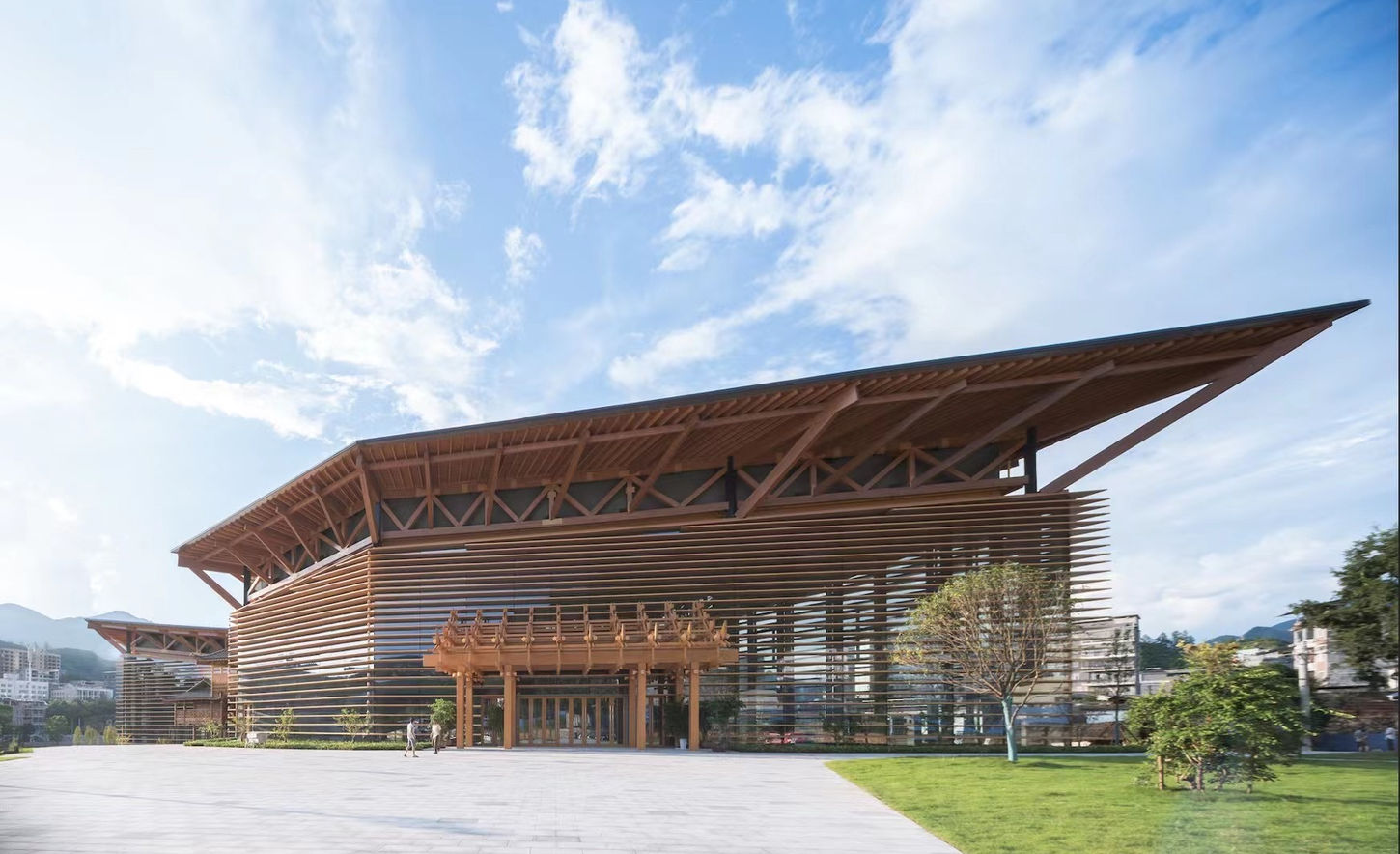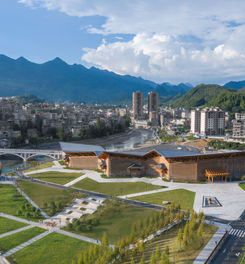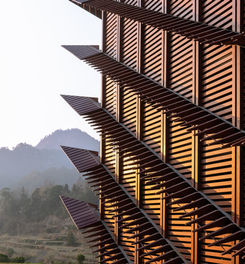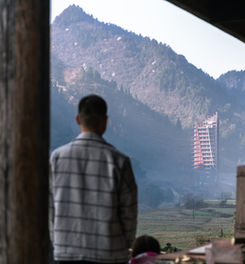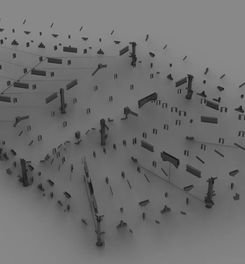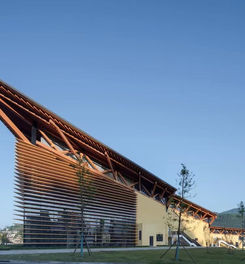"I think human beings are actually quite small. The life span of human beings is very short. In a time-space pattern like nature, we should be very gentle in contact with nature, build very modestly, and not be so arrogant.”
Prof. Li Baofeng Office WeChat
LI Baofeng is a Chinese First-Class registered architect and he is the former dean of
School of Architecture and Urban Planning, Huazhong University of Science and Technology. Now he is the chairman of Architectural and Urban Planning Design & Research Institute Co. LTD, Huazhong University of Science and Technology and the president of New Architecture Magazine.
[Text from the architect] We planned and designed the Chinese Tujia Pan-Museum, aiming to integrate 9 Tujia villages along the Longtan River, making the farming, life, and agricultural landscape of Tujia farmers become a living display of the museum. Currently, the tourist center, the tower, and the bridge are built.


Tourist Centre 游客中心
Ⓒ ZHAO Yilong
According to legend, the Tujia people are the descendants of the Bazi people in ancient China, 3000 years ago. During the Warring States period, they were first ruled by Chu( a state) and became Chu people. After Chu was defeated and conquered by Qin (another state), some Chu people escaped into the mountains to avoid Qin Dynasty. Therefore, the famous ancient Chinese literature “Peach Blossom Spring Story” was born, describing the Wuling utopia and the scenery of peach blossom spring that stretches for hundreds of square kilometers. Afterward, it evolved into the writer Shen Congwen’s literature of beautiful mountains, beautiful waters, and stilted buildings as well as the simple and intelligent Tujia people.

Sky-touch Tower 摩霄楼
Ⓒ ZHAO Yilong

Sky-touch Tower 摩霄楼
Ⓒ ZHAO Yilong
In the 1980s, population migration was possible in China, then farmers in the mountains began to leave their homes to work in cities. Young and middle-aged people in rural areas earned a higher income than they used to work in agriculture at the expense of leaving their homes all the year-round, but this caused a series of problems in their hometowns. We and the local government proposed the concept of “Regeneration” of the villages. We planned and designed the Chinese Tujia Pan-Museum, aiming to integrate 9 Tujia villages along the Longtan River, making the farming, life, and agricultural landscape of Tujia farmers become a living display of the museum. The content integrates tourism and organic sightseeing agriculture, attracting villagers who go out to work back to the villages to participate in the construction of new rural areas. While developing tourism, it saves the decline of local agriculture and traditional culture and rebuilds a benign rural society and natural ecology. Currently completed projects include the Visitor Centre, Sky-touch Tower, and Literati Bridge. As soon as these new buildings are completed, they immediately become vibrant public spaces in the countryside, attracting a large number of villagers and tourists.
The visitor center adopts a modern wooden structure as a whole, integrating traditional Tujia architectural symbols such as "Tujia Stilt House" and "Sword-back Beam", which embodies the integration of tradition and contemporary. The building body of the Sky-Touch Tower adopts a reinforced concrete structure, and the exterior of the building, looking like eaves of the wings, is made of Glued Laminated Wood, which not only demonstrates the contemporary spirit, but also reflects the tribute to the Tujia wooden structure tradition. The Literati Bridge is located on the Longtan River with a total length of 78 meters. The bridge structure is reinforced concrete arch voucher, and the upper structure is made of Glued Laminated Wood. The roof is set with 5 levels of heights and is decorated with small cyan tiles to create a moderate tension with the surrounding environment.
























